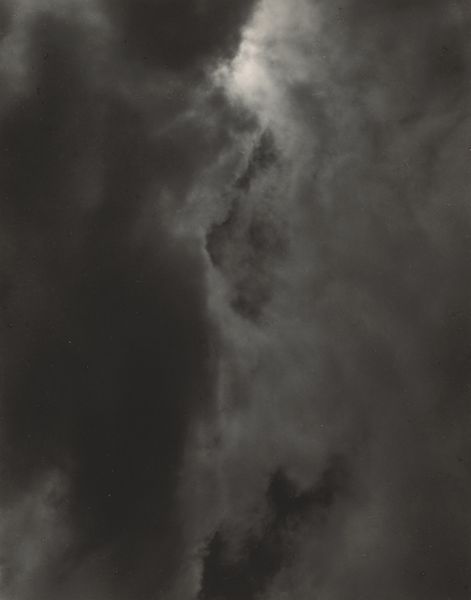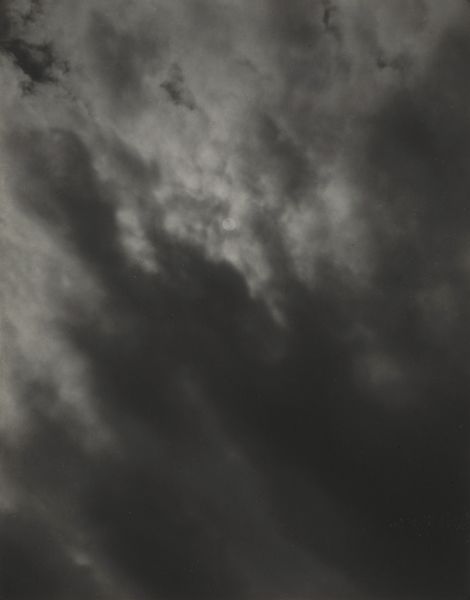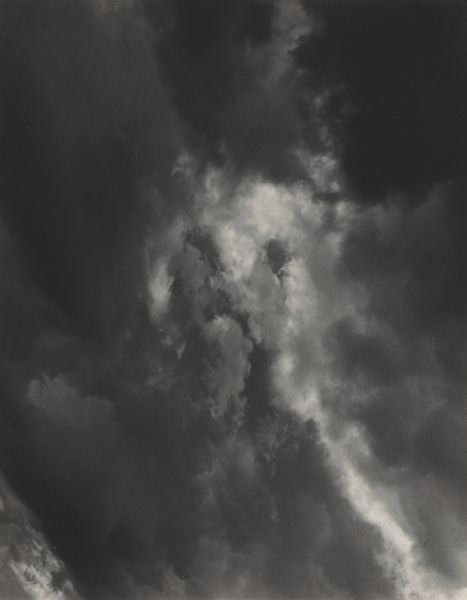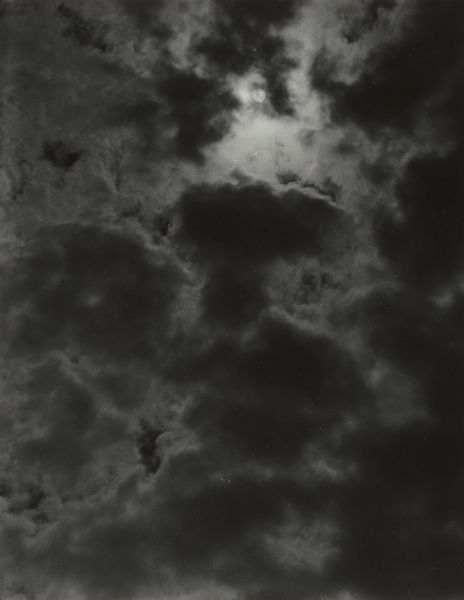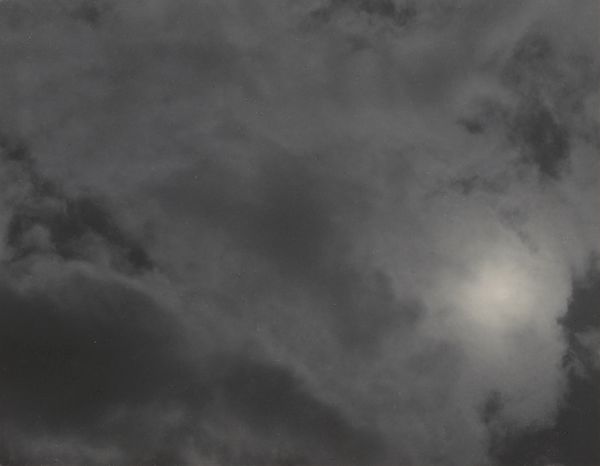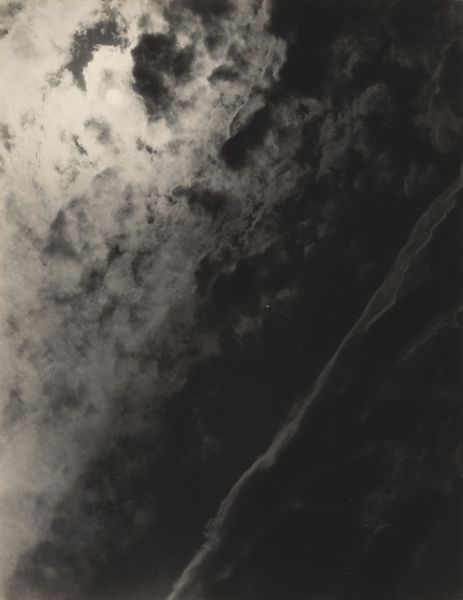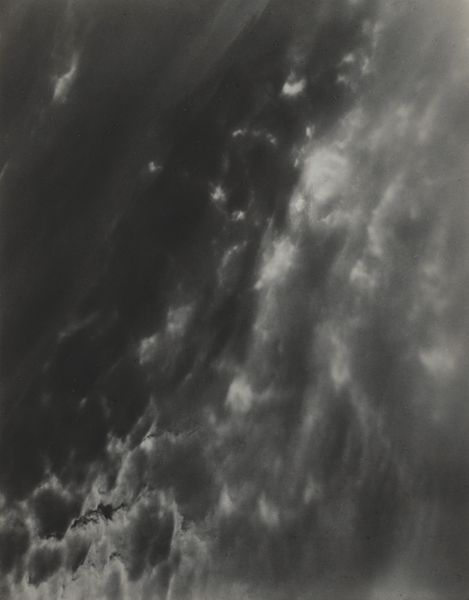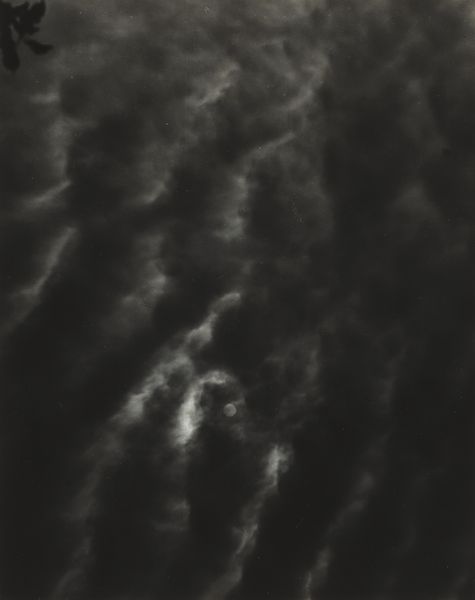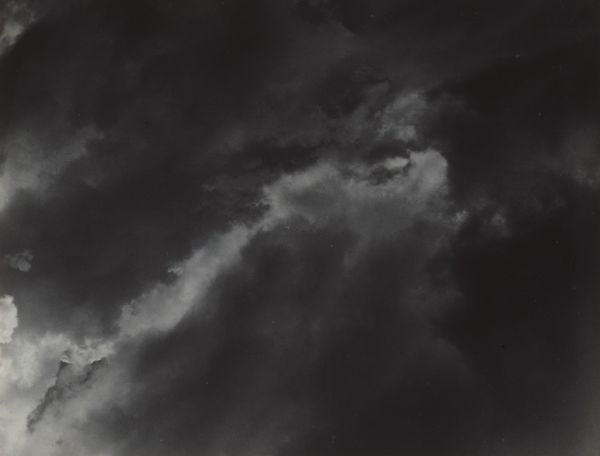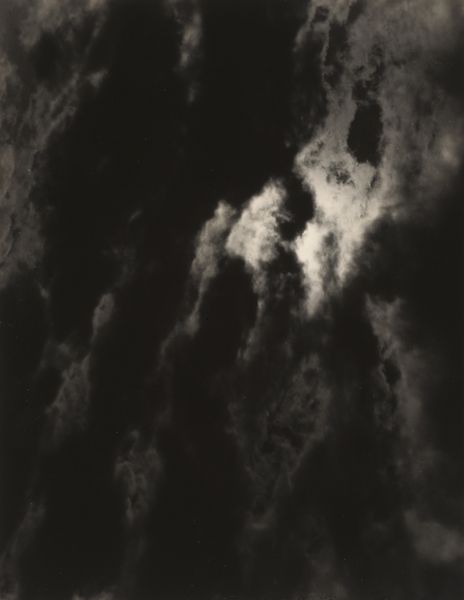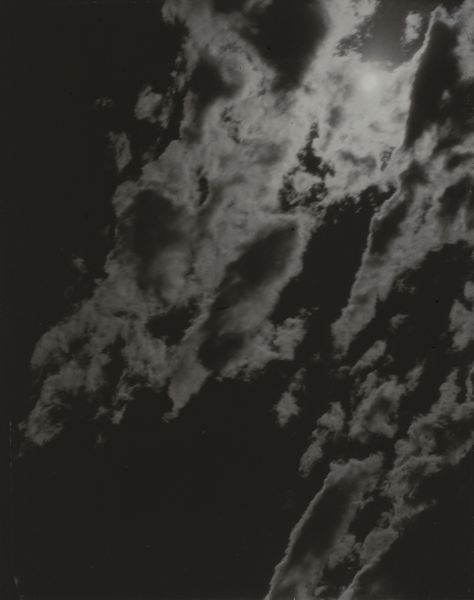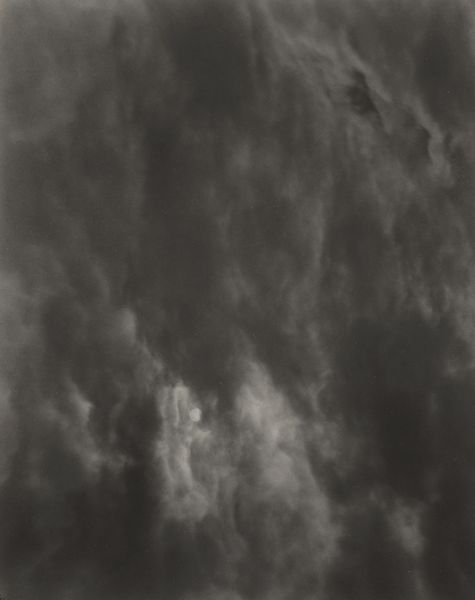
photography
#
natural shape and form
#
natural formation
#
snowscape
#
pictorialism
#
landscape
#
photography
#
grainy texture
#
dark shape
#
gloomy
#
fog
#
murky
#
modernism
#
mist
#
shadow overcast
Dimensions: sheet (trimmed to image): 11.8 x 9.3 cm (4 5/8 x 3 11/16 in.) mount: 34.3 x 27.6 cm (13 1/2 x 10 7/8 in.)
Copyright: National Gallery of Art: CC0 1.0
Curator: Let’s discuss "Songs of the Sky or Equivalent," a photography series by Alfred Stieglitz, made between 1923 and 1927. My immediate impression is one of almost unbearable heaviness—a murky sky dominating the frame. Editor: I see that sense of weight, certainly. But isn’t it interesting how Stieglitz avoids any kind of grounding? There is no horizon, just tonal shifts in shades of gray, drawing attention to the very essence of photographic form and its representational qualities. Curator: Absolutely. Clouds often symbolize the ephemeral, transition, and even divine presence across cultures. Stieglitz, who was deeply influenced by Eastern philosophies, may be implying spiritual transcendence here. Or perhaps something more internal, linked to personal moods and psychological states? Editor: Indeed. But structurally, the way he contrasts that almost brutally dark foreground with the bloom of light higher up draws the eye in very specific ways. Light emanating through shadow—a semiotic encoding present in Western religious art too—and the composition directs the gaze upward and beyond. This is the brilliance of its abstraction. Curator: The ambiguity of his images allows such multifaceted readings. These photos freed photography to explore beyond mere recording, opening up new avenues to access abstract form and explore themes that were more like painting than conventional photography. Editor: In his rendering, Stieglitz extracts symbolic value using just light and shade—no additional representational form gets in the way. A picture which acts as its own symbol of pictoriality. I appreciate how starkly elemental it feels now that you've framed the cultural and pictorial approach. Curator: And I will try and remember to stay in tune with the elemental structural elements as well—both takes adding dimension to this intriguing and complex body of work.
Comments
No comments
Be the first to comment and join the conversation on the ultimate creative platform.
